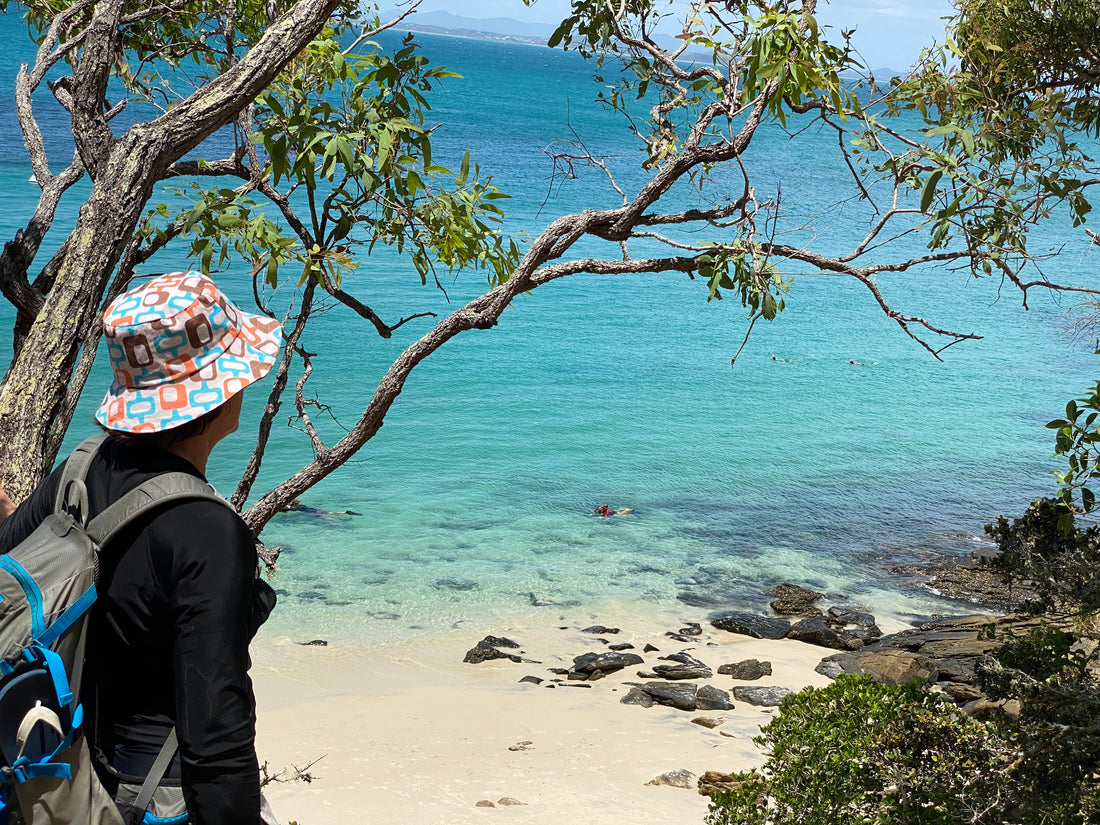Islands in the Great Barrier Reef
Sustainability of our Great Barrier Reef Islands and the impact of resorts and tourism.
Brimming with biodiversity and natural wonder, the UNESCO World Heritage-listed Great Barrier Reef is one of Australia’s most spectacular holiday playgrounds. But it’s important to be mindful of how your visit can affect this living masterpiece. By making conscious efforts to minimise your environmental footprint during your visit, you can help protect this dazzling marine ecosystem for the enjoyment of future generations
Let's focus on Great Keppel Island (Woppaburra, Wop-Pa, Wapparaburra) which lies 15 kilometres from the coast off Yeppoon. Known as GKI it is one of 25 Great Barrier Reef resorts on islands across the reef, which are part of the Great Barrier Reef Island Decarbonisation Program (GBR Decarbonisation Program).
The program foucusses on sustainability assessments, identification and analysis of a range of decarbonisation options and in particular to support GKI to reduce its operational greenhouse gas emissions and increase its resilience to climate change.
GKI is a calm and reasonably quiet island that is under developed which makes it so attractive as a get away place!
Managing it's energy consumption and impact
The largest energy source on GKI is mobile fuel combustion for water vessels at 48%, followed closely by stationary fuel combustion (diesel, petrol and LPG) at 47%.
Solar generation accounts for only 3%! Which is sad to see in this sun overflowing island!
Mobile fuels combustion for water vessels (sea going) being the second largest contributor to total emissions (36.3%)!
With plans being made to develop the island into large tourism resorts!! concerns have been raised for over extraction of freshwater from
the under-island aquifer leading to historical bore water depletion (water, resilience) amongst many things impacting on the quiet nature of GKI.
This makes us ask the question why do we need to develop these islands into multi-tourism resorts?

Nature, flora and fauna
GKI's coastline shows some dead gumtrees against a backdrop of green native bushland, this is from possums who have been destroying gum trees because of their relatively large populations.
The island eco report identified that few native marsupials or rodents are known from the area; however feral mammals including goats have also altered vegetation communities and caused damage to local habitats.
Great Keppel is known for 5 native mammal species and 4 native bats, 17 native reptile species, 9 frog species and 67 bird species on the island and there are only 3 non-native mammal and 1 exotic reptile species identified. And no introduced amphibian species such as Cane Toads!
Yet it’s not the feral animals or large possum population that threatened the island…
Tourism and impact on ecology
It could all have changed when decades ago, GKI was a must-see party destination, famous for its "get wrecked" slogan in the 1980s!
Then a new tourism resort was planned to take over the small community with a $600 million development plan by a Sydney property company; a marina, 750 villas, 300 apartments, a 250-room beachfront hotel, golf course, infrastructure, retail village, casino, airstrip and research centre in 2006. In 2019 Sunshine Coast-based developers had plans to develop the island. And in 2021 Rinehart began plans for a “world-class, year-round beach club" with an underwater bar, shopping and a marina. This new proposed GKI Resort was to be a significant commitment to the use of renewable energy by embracing one of Australia’s most significant natural resources – its abundant sunshine. Yet the impact on climate with fuel combustion of vessels (and spills in our ocean) using the island would be devastating.
The reef and climate changes
Plastics on the Great Barrier Reef islands
When spending some time on GKI makes one grateful that all these resorts did not happen! And the island has remained underdeveloped. Yet sadly there is also plastic waste found on the island! Where people are there is waste! We all know it and each time it saddens me. Luckily GKI has remained a small scale island and tourism alike.

It will remain a beautiful island to enjoy with leaving only your footprints!
Sources: decarbonisingGKI.qld.gov.au; amp.abc.net.au; gkiresort.com.au; sbs.com.au;

